Featured Comment:
“I made it with salmon, because that’s my family’s favorite fish. It was excellent. Will be making it again soon.”
– Sam
What is Sakana no Nitsuke?
Sakana no Nitsuke (魚の煮付け) is a traditional Japanese cooking method in which whole fish or fish fillets are simmered in a sweet and savory broth seasoned with soy sauce, mirin, sugar, and sake. The name of the dish comes from the words sakana (魚) which means “fish” and nitsuke (煮付け) which means “to simmer and flavor.”
Nitsuke as a cooking method was developed as a way to preserve fish back in the days before refrigeration. It was especially used for fish that spoil easily or with strong odors. The ingredients used in the broth remove or mask unpleasant smells, tenderize the flesh, and highlight the natural qualities of the fish.
Japanese simmered fish is most commonly served with rice, miso soup, and vegetable side dishes to make a “teishoku” set meal or “ichiju sansai” (a meal consisting of one soup and three side dishes).
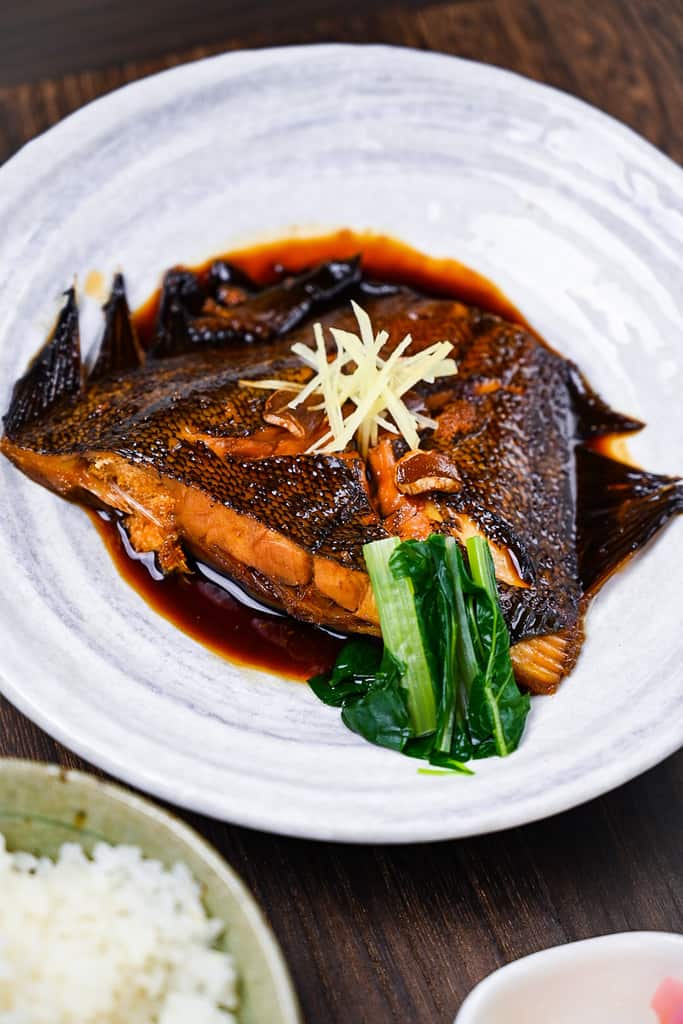
Types of Fish You Can Use
I know, “simmered fish” is pretty vague, right? But that’s because this recipe can use many different kinds of fish! Here is a list of some fish I’d recommend using to make Sakana no Nitsuke:
- Cod
- Mackerel
- Flatfish
- Flounder
- Snapper
- Sole
- Haddock
- Yellowtail
This is definitely not an exclusive list; it’s just some ideas! Sakana no Nitsuke is usually best made with white fish. Let me know in the comments if you have had success with other kinds of fish!
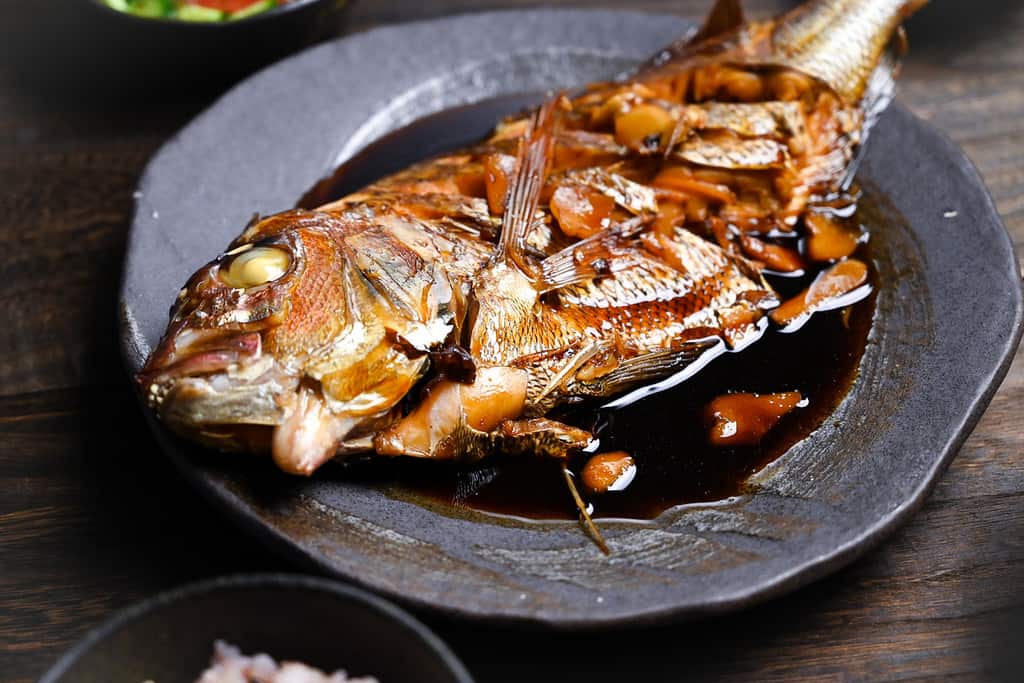
Visual Walkthrough & Tips
Here are my step-by-step instructions for how to make Sakana no Nitsuke at home. For ingredient quantities and simplified instructions, scroll down for the Printable Recipe Card below.
If you prefer to watch the process in action, check out my YouTube video of this recipe for a complete visual walkthrough!
Prepare The Ingredients
Start by sprinkling the fish with salt on both sides and resting for 10 minutes in the fridge. This will help draw out excess moisture.
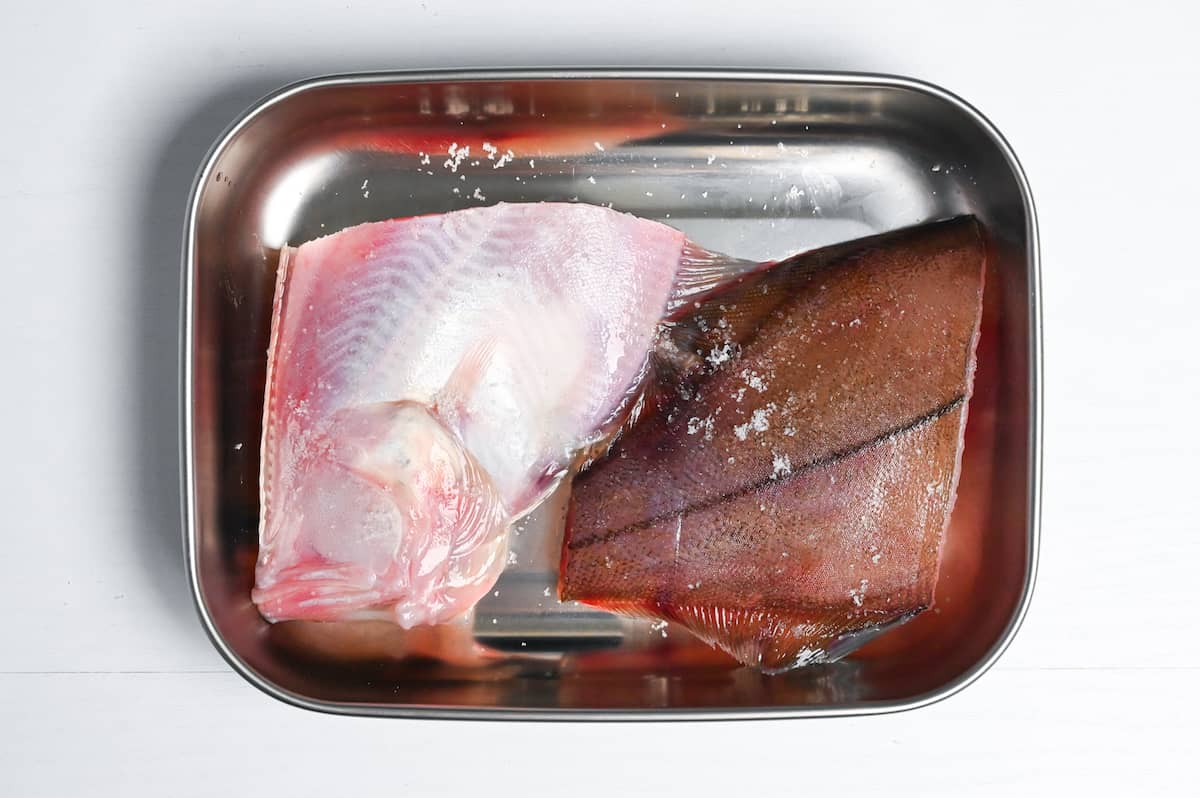
Peel the fresh ginger and cut it into thin slices about 2mm thick. You could also julienne a small amount to garnish the dish at the end if you like.

Use a sharp knife to make shallow incisions on the skin. This will allow the flavor of the broth to penetrate the fish more evenly when simmering.
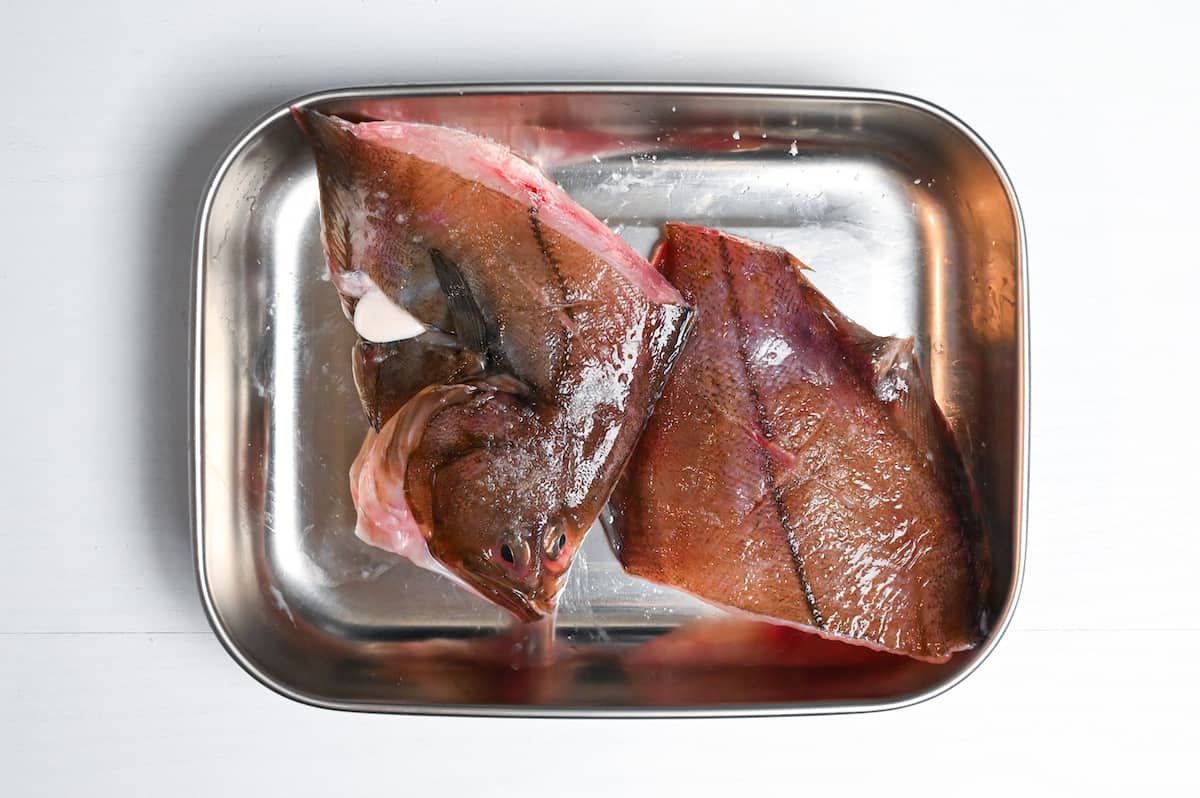
Prepare a bowl of freshly boiled water and a bowl of ice cold water.
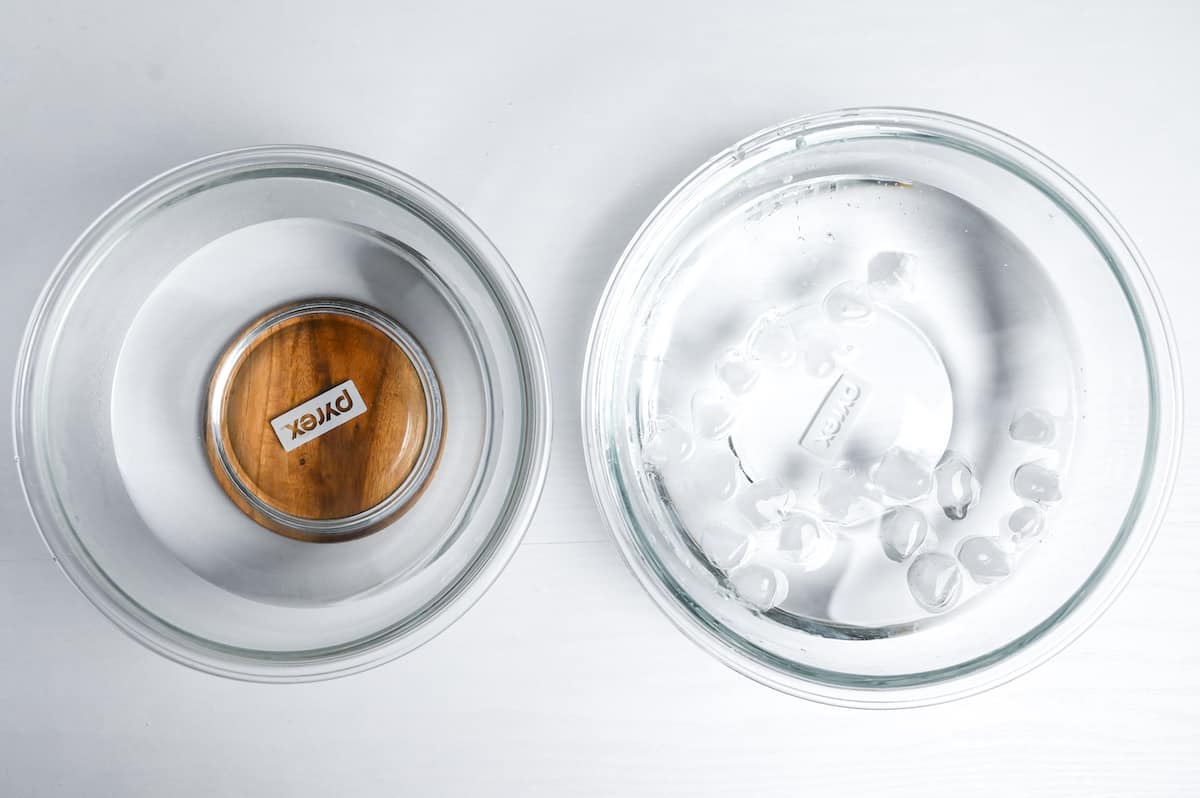
Use tongs to hold each fish fillet in the boiled water for 5-10 seconds and then immediately transfer it to the ice water.
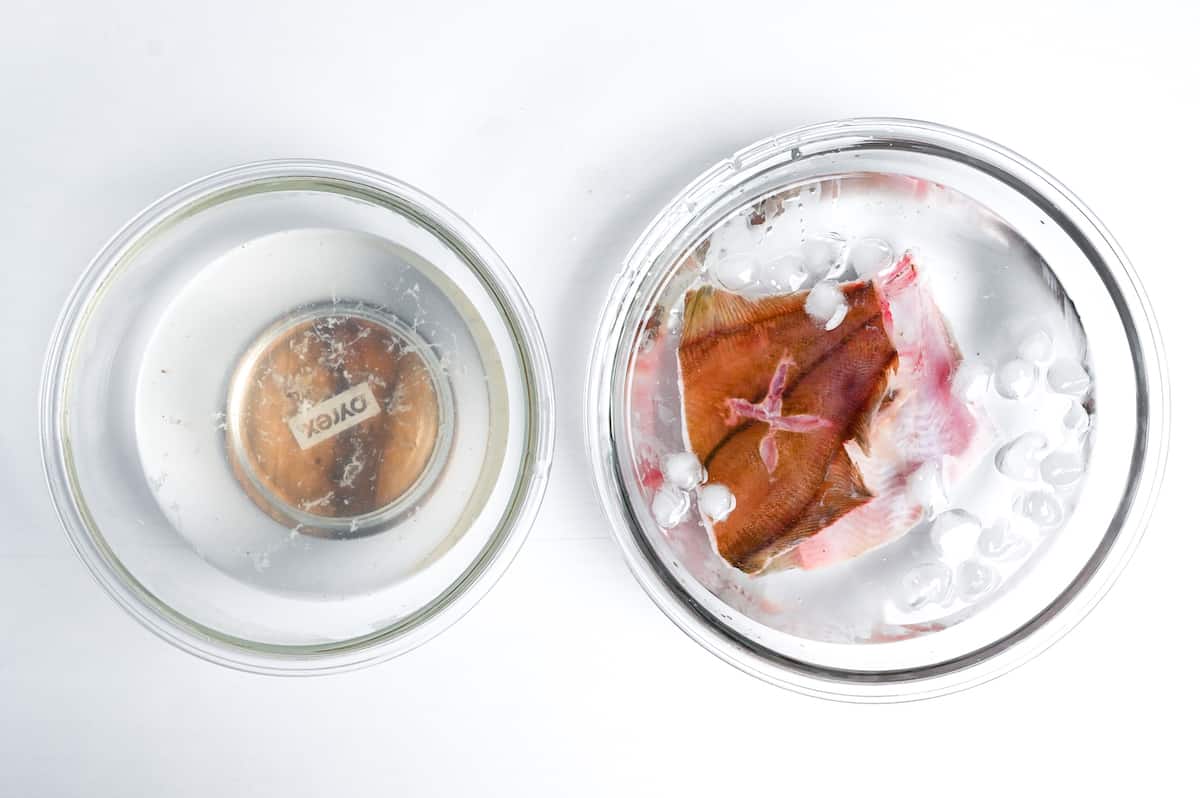
This method essentially washes and shocks the fish, helping remove any unpleasant fishy-ness and improving the taste.
Dry the surface of the fish using kitchen paper. This is to prevent watering down the broth.
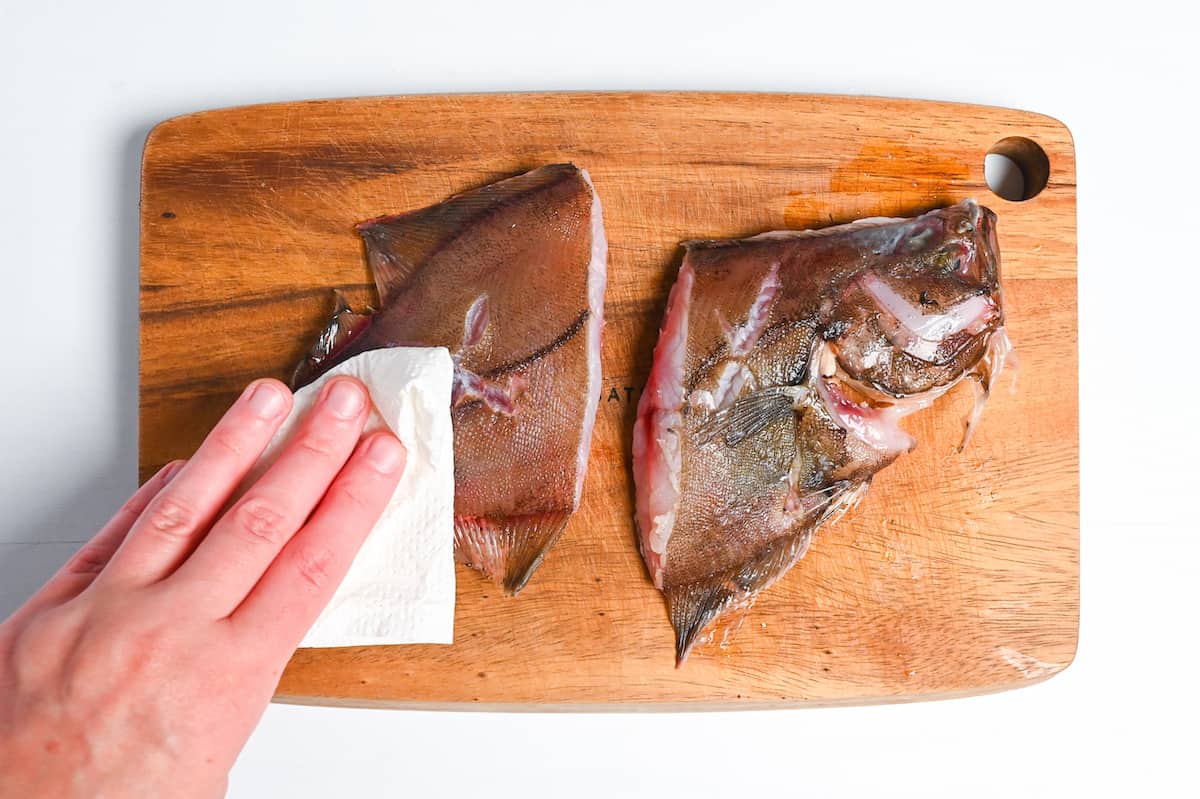
Make The Broth and Simmer
Add the water, sake, mirin and sugar to a pan large enough for the fish to lay flat.
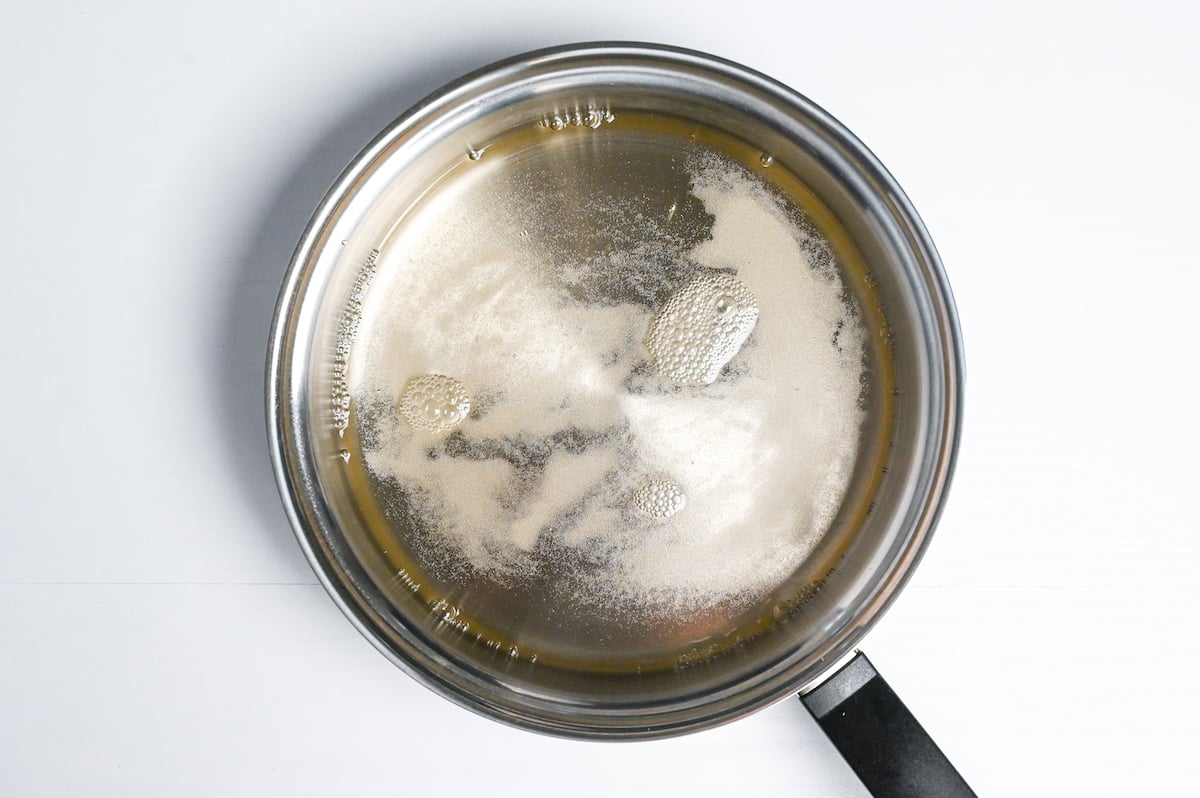
Transfer the pan to the stove and heat it to medium. Stir until the sugar has dissolved and then add the ginger and fish with the skin side facing up.
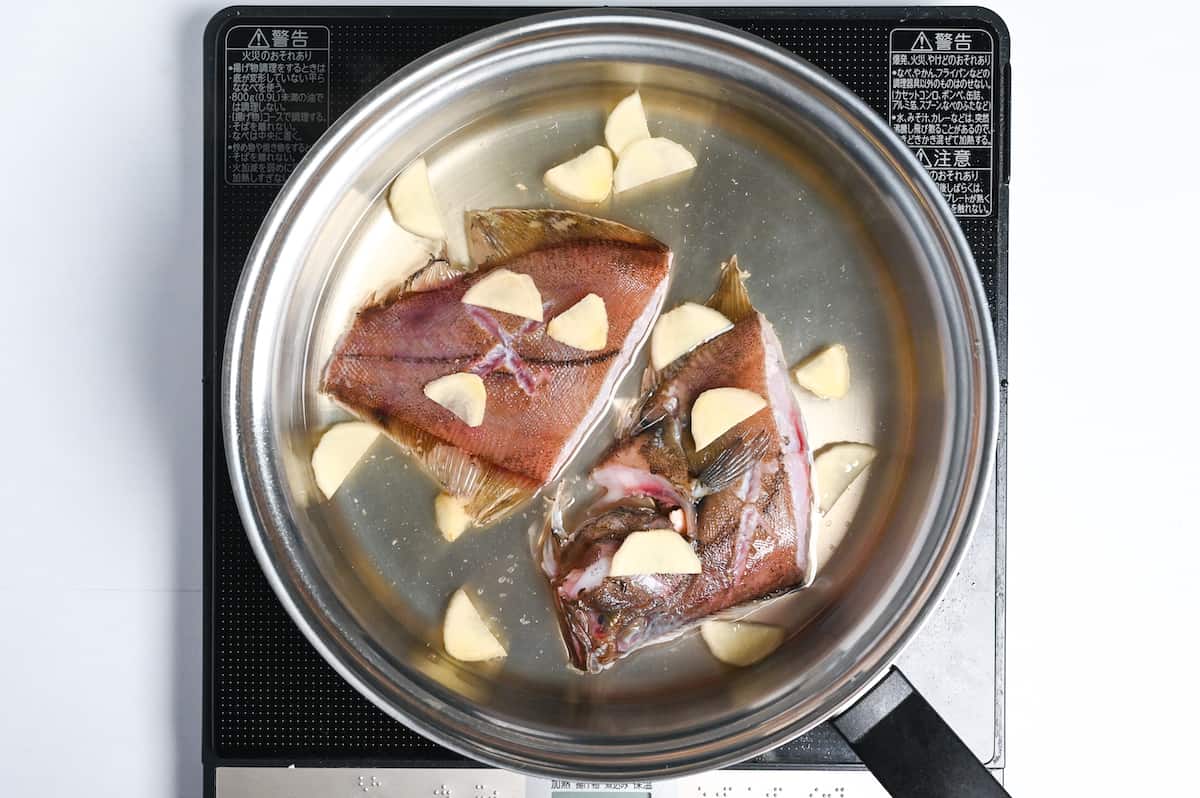
Once the mixture starts to bubble, add the drop lid and allow to simmer for 3 minutes.
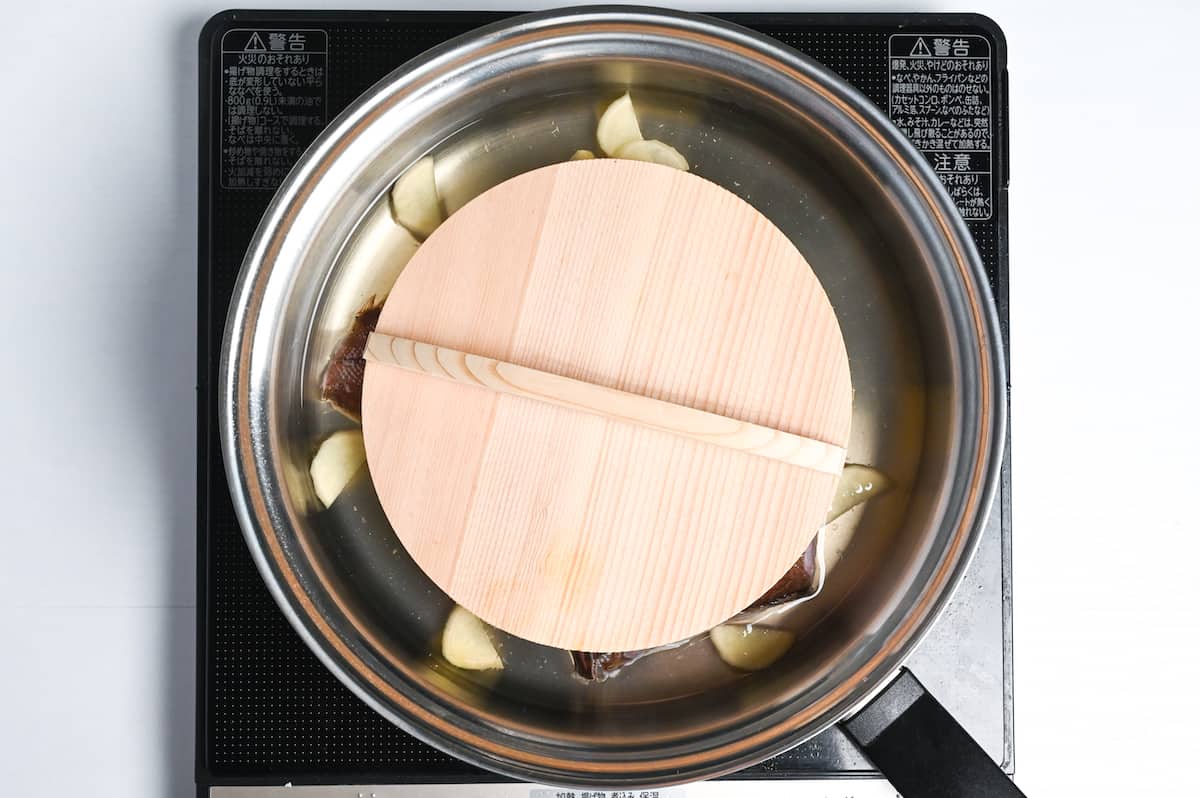
An otoshibuta is a traditional Japanese cooking tool used for simmered dishes. A small round lid sits on top of the simmering liquid, helping to distribute the heat evenly around the food.
It’s used for Sakana no Nitsuke, as it places weight on the surface of the fish and broth, preventing ingredients from moving around. Drop lids were traditionally made from wood, but stainless steel and silicone ones are also popular. If you don’t have a drop lid, check out my How to Make Otoshibuta post.
Remove the drop lid and measure out the soy sauce. Add one-third of the soy sauce to the broth.
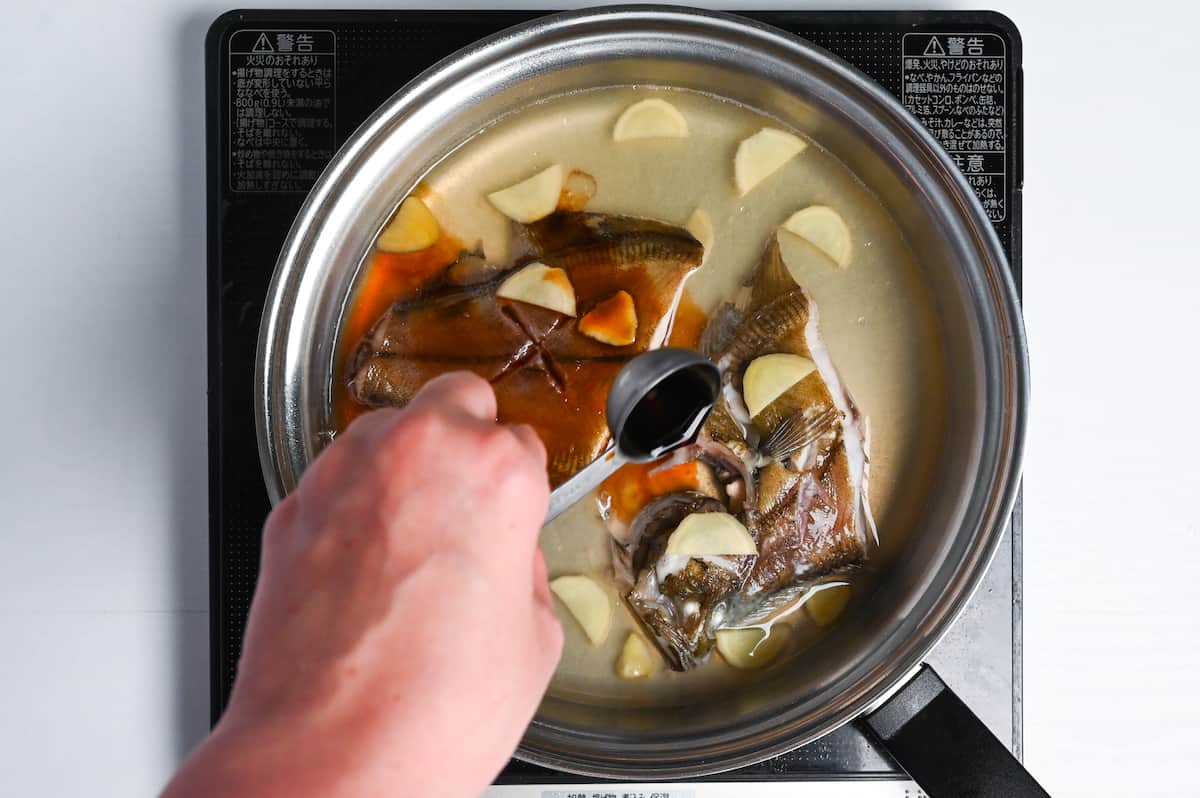
Scoop the broth and baste the fish until the soy sauce has incorporated into the rest of the broth. Repeat until you’ve used all of the soy sauce measured.
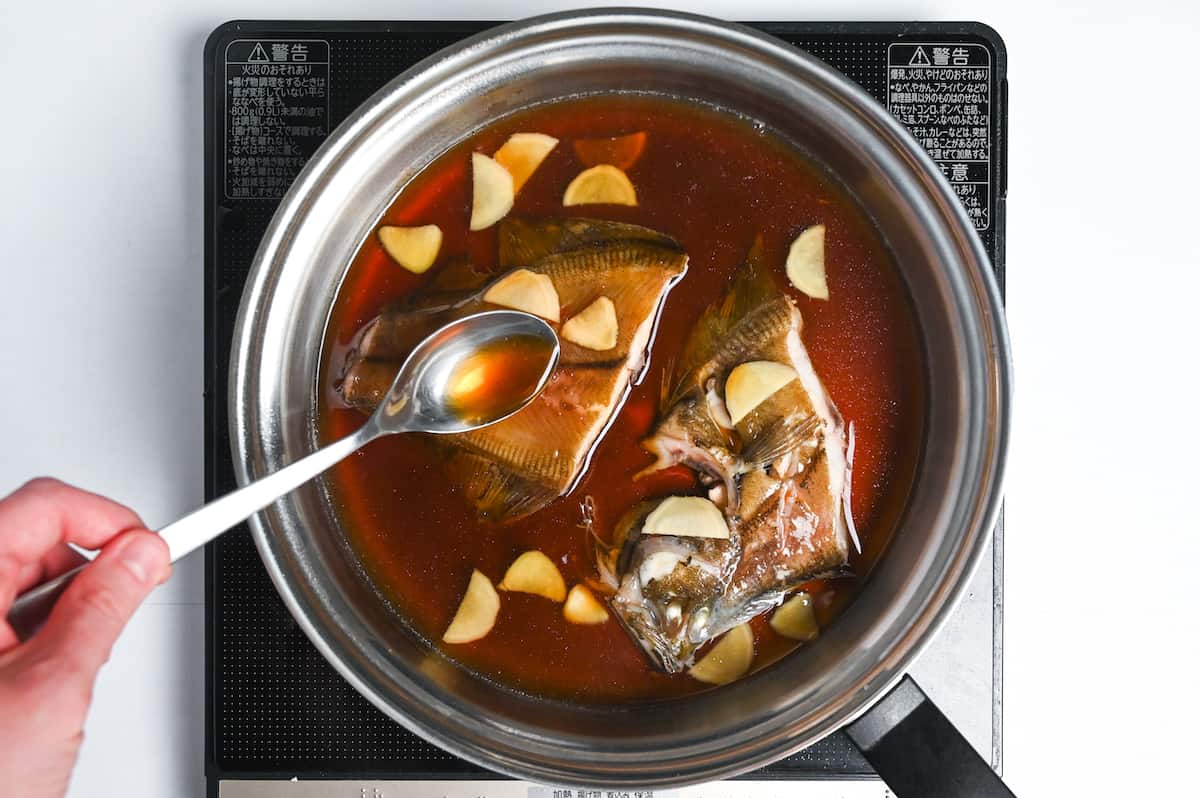
Place the drop lid back on and simmer for 10 minutes.
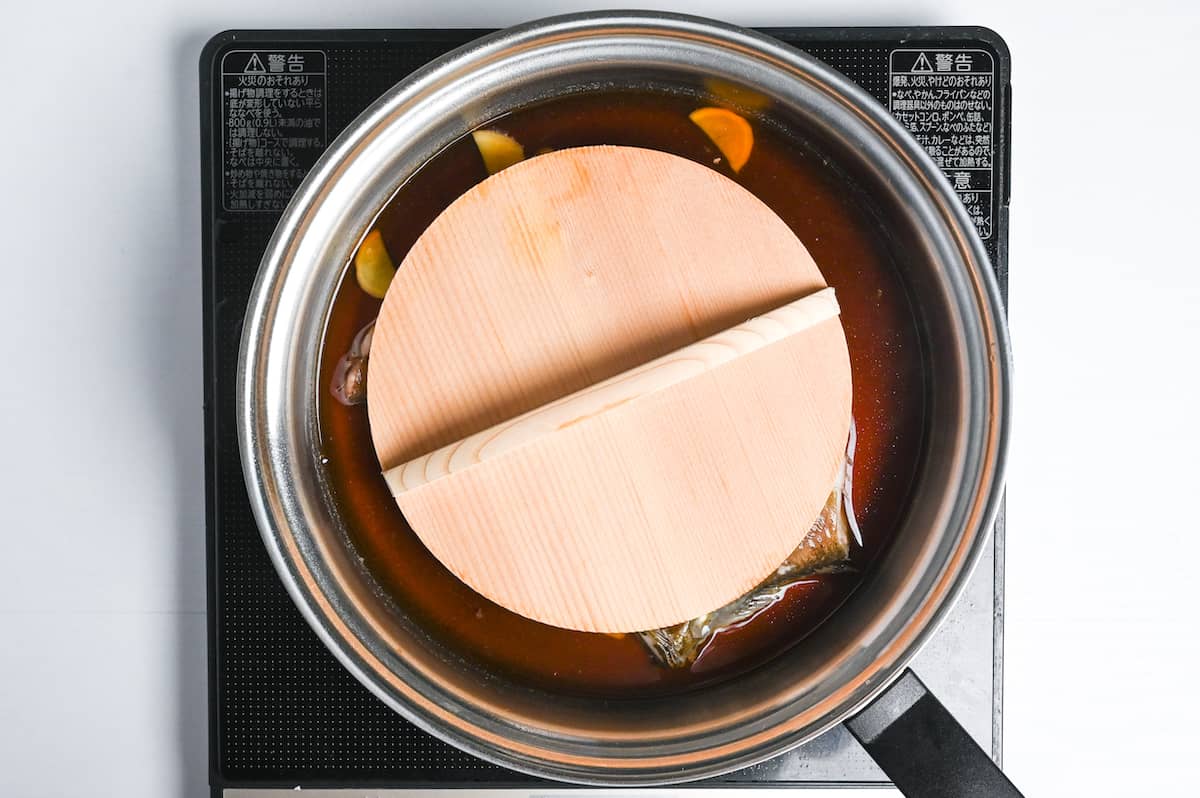
While the fish is simmering, bring a small saucepan of water to a boil and cut the Japanese mustard spinach (komatsuna) into 5cm (2inch) pieces.
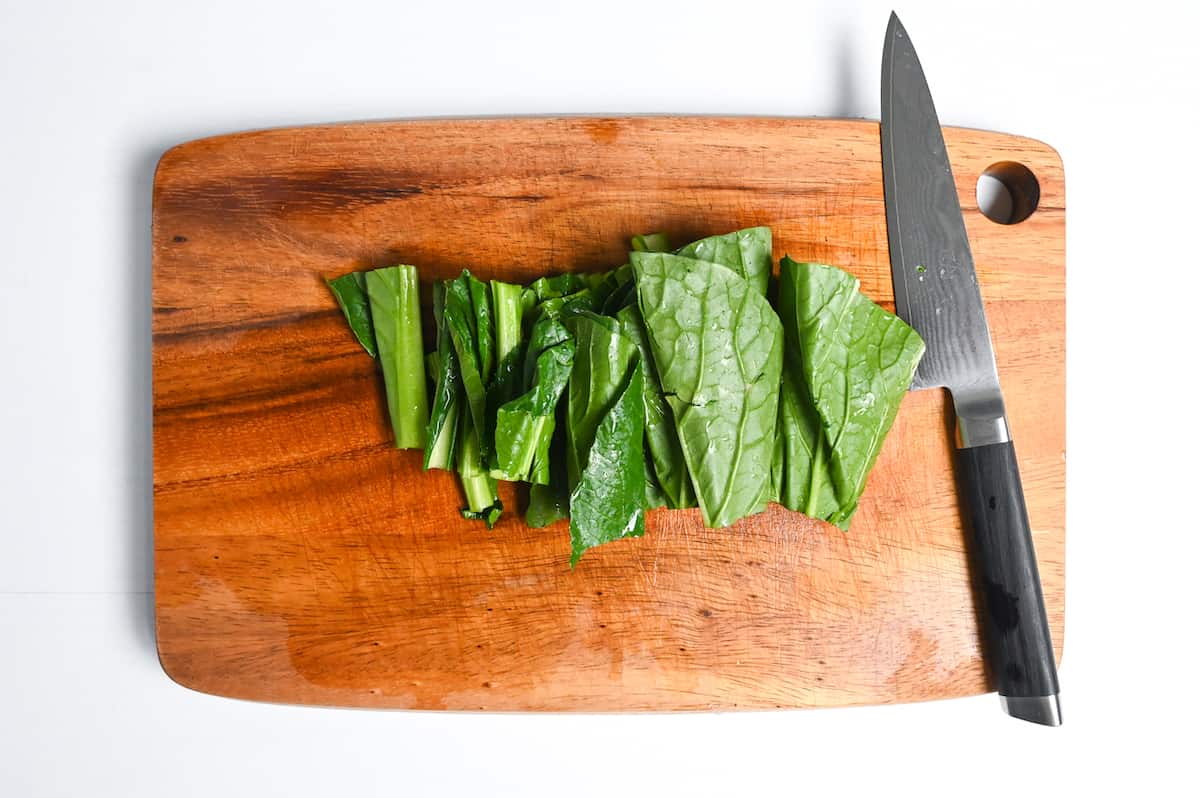
Blanch in boiling water for 1 minute.
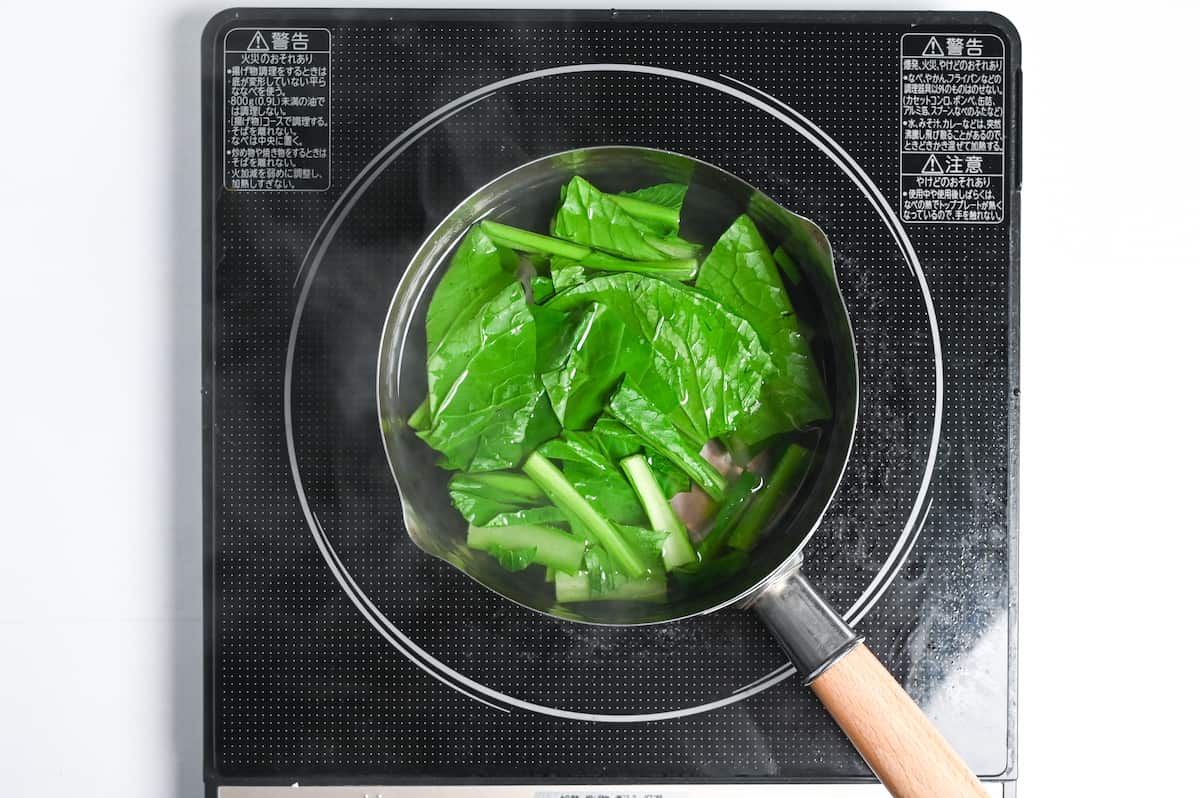
Transfer the Japanese mustard spinach to a bowl of cold water and set aside.
Once the fish has been simmering for 10 minutes, remove the drop lid and baste until the liquid has reduced to one-third of its original volume.
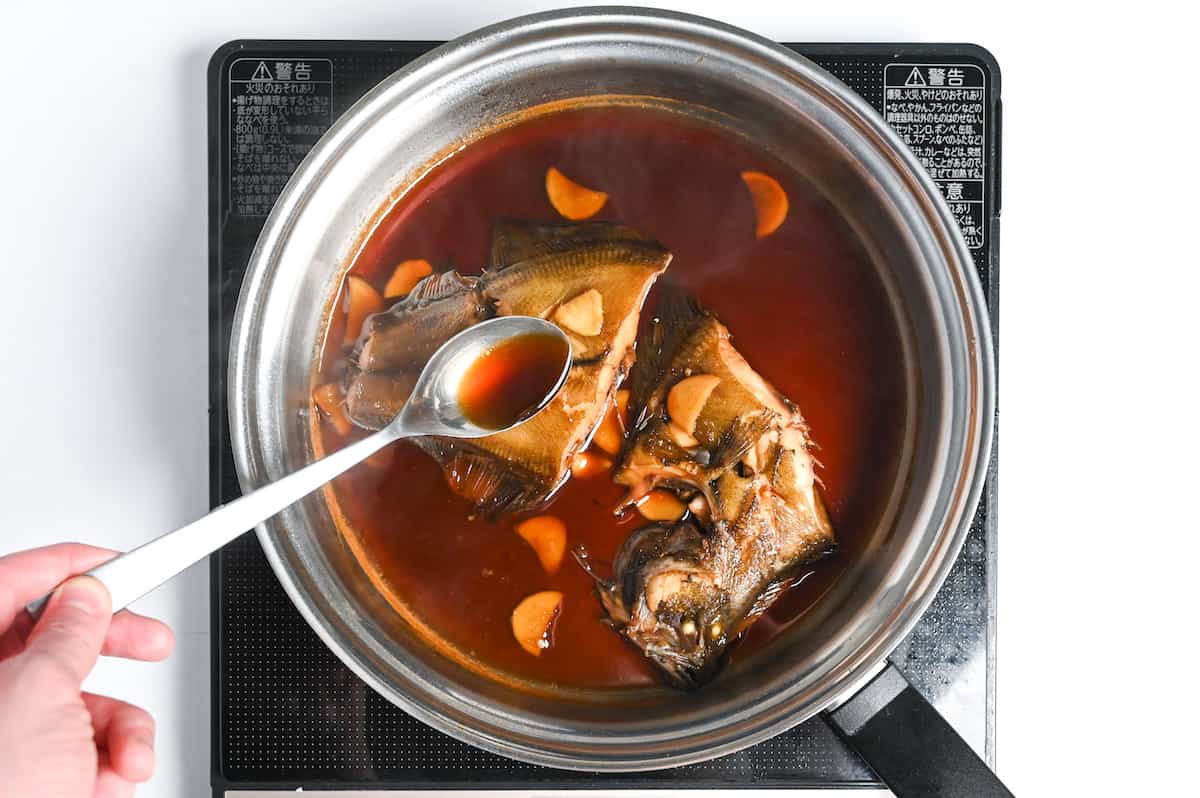
It might be tempting to turn up the heat to speed up the process, but I recommend being patient and simmering over a medium or medium-low heat for better flavor and texture.
Transfer the fish to serving plates and pour a few tablespoons of the broth over the top. Squeeze any excess water out of the Japanese mustard spinach and place them on the side of the fish.
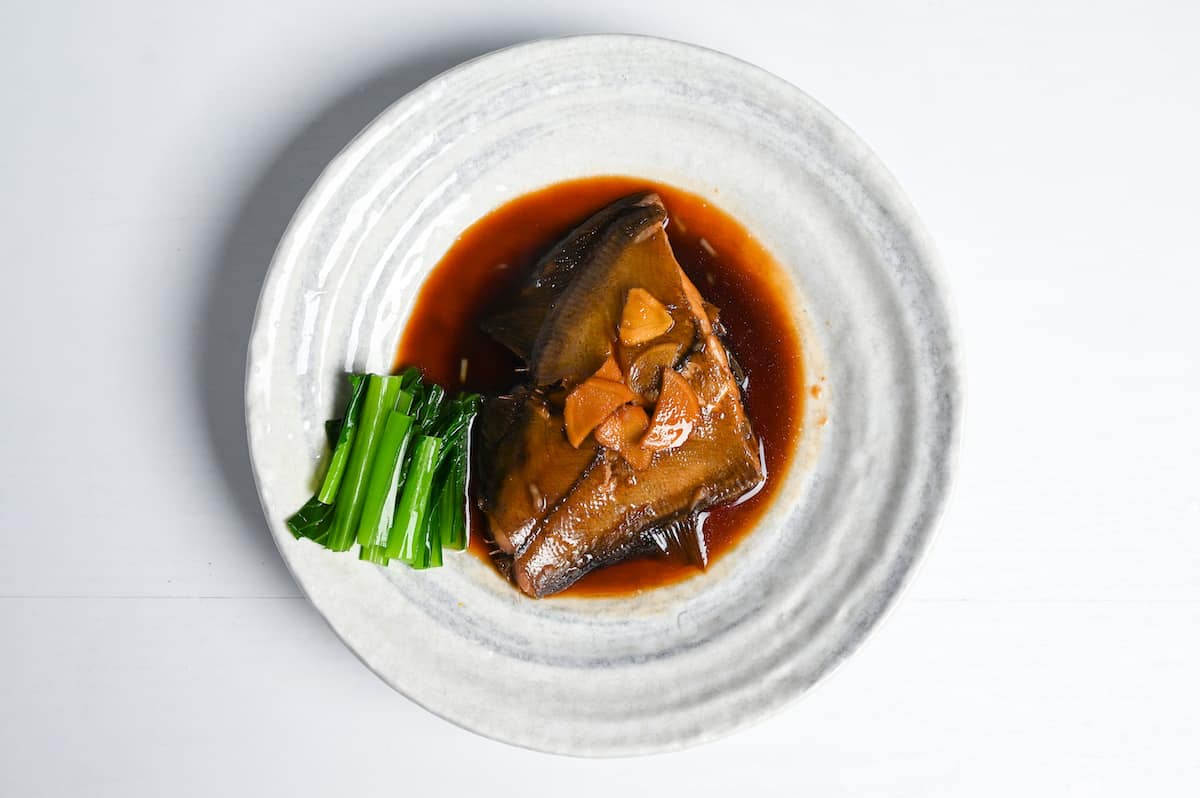
Top with a few pieces of ginger, and enjoy!
Jump to Full Recipe MeasurementsHow to Store
Sakana no nitsuke should be cooled quickly and stored in a sealed container in the refrigerator for up to 2 days. Make sure not to leave it at room temperature for more than 20 minutes to prevent the growth of harmful bacteria.
To reheat, I recommend heating on the stove since microwaving can negatively impact the texture.
To freeze, place the fish in a metal tray or ziplock bag with the sauce and use within 2 weeks. Defrost in the refrigerator overnight and reheat on the stove.
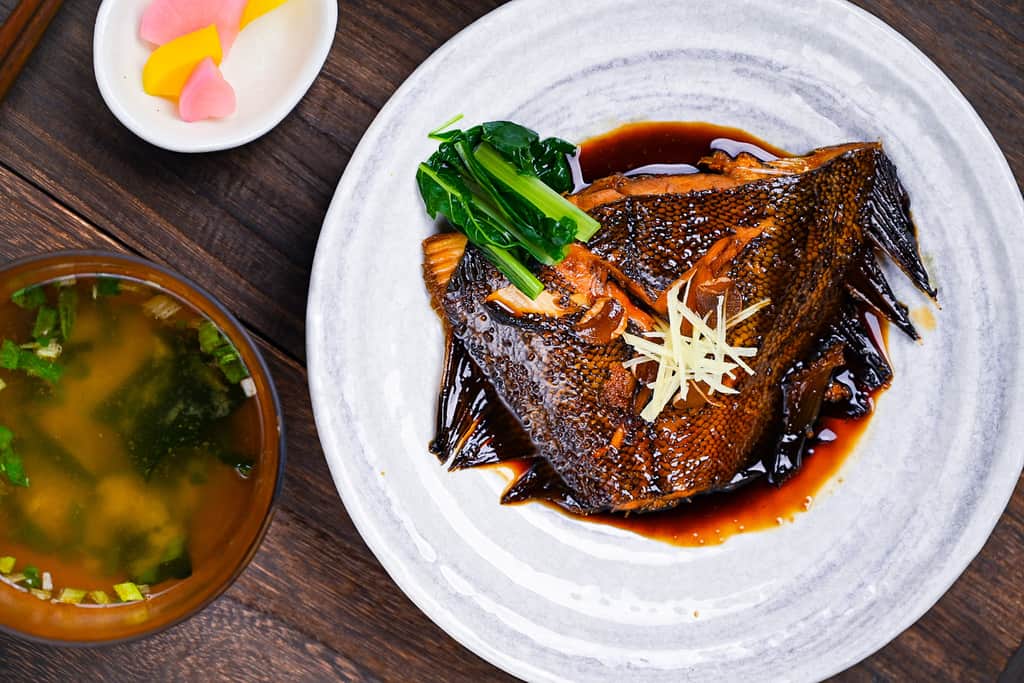
FAQ
Here are answers to frequently asked questions I have received across all platforms, including here, YouTube, Instagram, and Pinterest. If you have any questions, feel free to send them to me anytime! It will be a big help for everyone in this community!
In dishes that are cooked by simmering, like this one, the ingredients are cooked in broth. So any unpleasant flavors/odors can easily transfer to the cooking liquid. So my aim was to eliminate as much of the unwanted smell as possible before cooking. The first step is to remove some smell-causing components along with the water through osmotic pressure. The second step, “shimofuri” in Japanese, is to remove fat, blood, and slime that contribute to the smell. These components might not be wiped off completely with step 1.
How to Repurpose The Leftover Broth
When you prepare Sakana no Nitsuke, it’s natural to have some leftover broth. However, you should never try to drink it as it is not a soup or sauce.
Instead, consider using it as a sweet soy sauce-like seasoning with fish flavor. You can use it to takikomi gohan, as a secret ingredient in curry rice, or to stew root vegetables like daikon radishes.
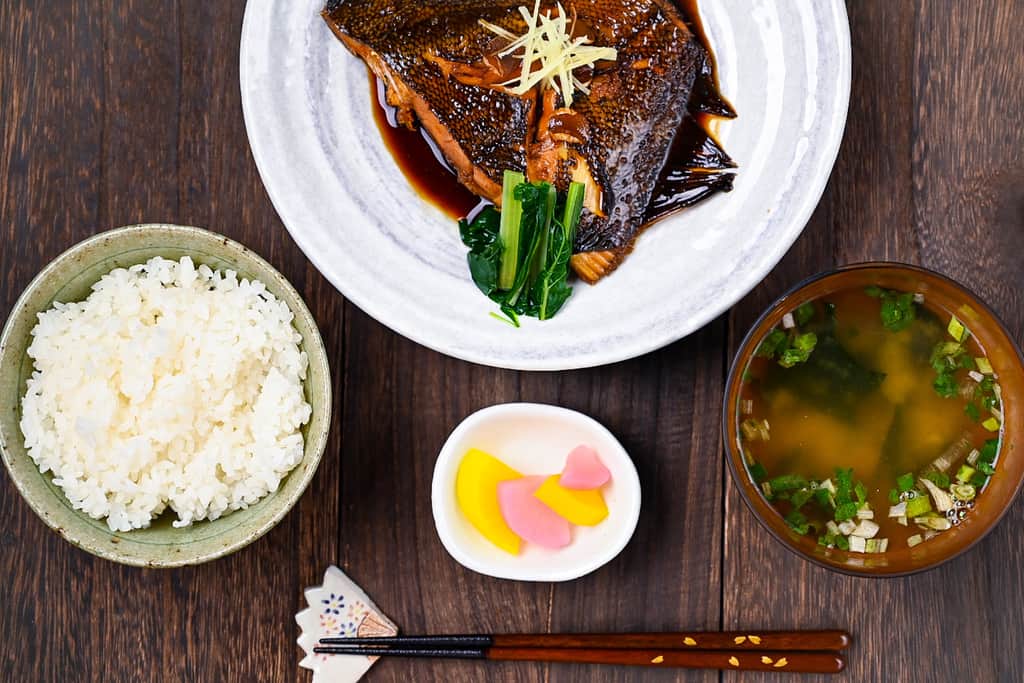
I hope you enjoy this Sakana no Nitsuke recipe! If you try it out, I’d really appreciate it if you could spare a moment to let me know what you thought by giving a review and star rating in the comments below. It’s also helpful to share any adjustments you made to the recipe with our other readers. Thank you!
More Japanese Fish Recipes
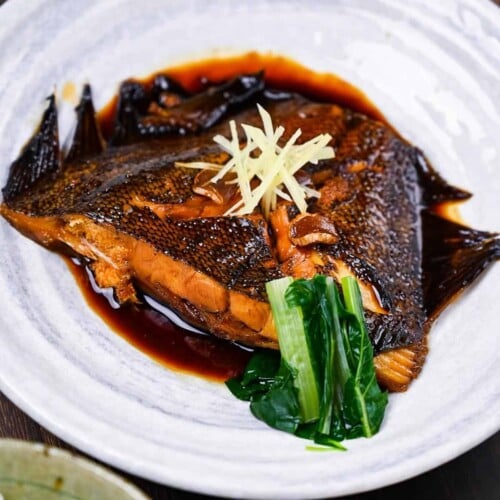
Sakana no Nitsuke (Japanese simmered fish)
Ingredients
- 200 g white fish fillets flatfish, flounder, snapper or similar
- 2 pinches salt
- 20 g ginger root
- 1 bowl freshly boiled water
- 1 bowl ice cold water
- 150 ml water
- 150 ml sake
- 3 tbsp mirin
- 2 ½ tbsp sugar
- 3 tbsp Japanese soy sauce (koikuchi shoyu)
- 50 g Japanese mustard spinach (komatsuna) (komatsuna) or regular spinach/bok choi
My recommended brands of ingredients and seasonings can be found in my Japanese pantry guide.
Can’t find certain Japanese ingredients? See my substitution guide here.
Instructions
- First, sprinkle 200 g white fish fillets with a 2 pinches salt on each side and rest for 10 minutes.

- Cut the 20 g ginger root into 2mm thick slices.

- After 10 minutes, use a sharp knife to make shallow incisions on the skin. This can be a cross or 2-3 diagonal lines. (If you're using a whole fish such as snapper, make incisions on both sides.)

- Prepare 1 of 1 bowl freshly boiled water and 1 1 bowl ice cold water.

- Swill the fish in the boiling water for 5 seconds, then transfer to the ice water.

- Remove it and dry with a paper towel.

- Pour 150 ml water, 150 ml sake, 3 tbsp mirin and 2 ½ tbsp sugar into a pan.

- Place over a medium heat and stir. Once the sugar is dissolved, add the ginger slices and fish with the skin side facing up.

- Once the broth starts to bubble, lower the heat and place a drop lid (instructions in post) on top of the fish. Simmer for 3 minutes.

- Measure out 3 tbsp Japanese soy sauce (koikuchi shoyu) and remove the drop lid. Pour ⅓ of the soy sauce over the fish, and spoon the liquid in the pan over the fish. Once it is incorporated into the rest of the sauce, repeat until you've used all of the soy sauce.

- Return the drop lid to it’s original position and simmer for 10 minutes.

- While it's simmering, bring a small pot of water to the boil and cut 50 g Japanese mustard spinach (komatsuna) into 5cm (2 inch) pieces.

- Blanch for 1 minute, then remove from the heat and transfer to a bowl of cold water.

- After the fish has been simmering for 10 minutes, remove the drop lid and continue to spoon the sauce over the surface until the liquid is reduced to one-third of its original volume.

- Serve the fish fillets up on a plate, top with ginger and pour a few tablespoons of leftover sauce over the top. Squeeze the excess water out of the Japanese mustard spinach and place on the side of the plate.

- Enjoy!
Video
Notes
- To store, cool quickly and refrigerate in an airtight container for up to 2 days. To freeze, store in a metal container or ziplock bag in the sauce and use within 2-3 weeks. Defrost in the refrigerator over night.
- Reheat on the stove.
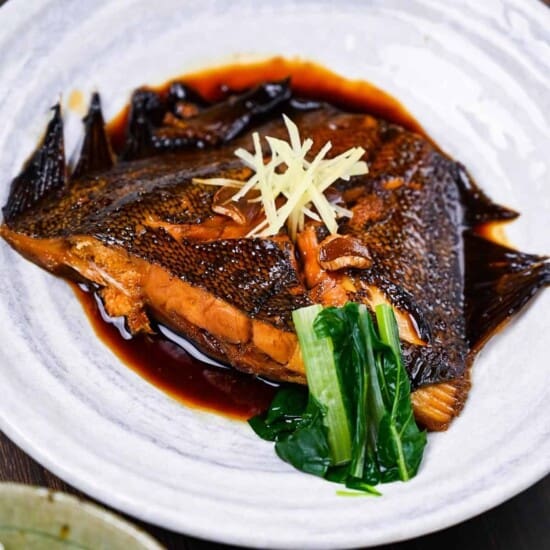




I made it with salmon, because that’s my family’s favorite fish. It was excellent. Will be making it again soon.
Hi Sam,
Thank you for your comment and sharing your feedback! I’m happy to hear you enjoyed this recipe! 🙂
Yuto
It is an amazing dish. I made it for the second time using sea bream and it came out perfect. I appreciate your quick response to my question (how to keep while waiting for late guests). love this blog.
Hi Hadas,
Thank you for your kind words! I’m happy to hear it turned out great! 🙂
Yuto